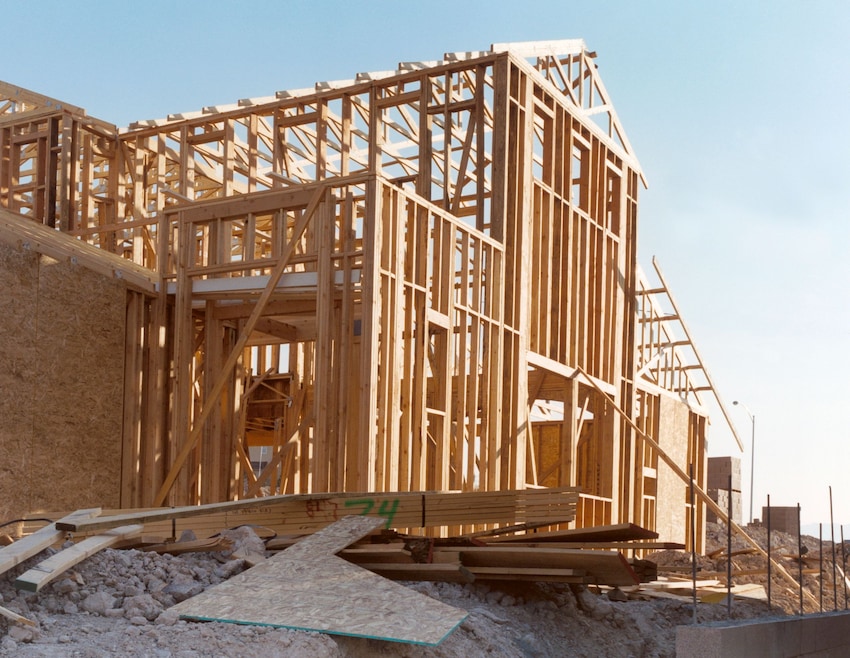Homebuilders across the country reported low confidence in the housing market this month due to tariff-induced cost increases but felt slight relief with the modestly declining mortgage rates.
Builder sentiment about current and future new single-family home sales increased 1 point to 40, according to the National Association of Home Builders/Wells Fargo Housing Market Index released Wednesday. Any reading above 50 is considered a positive outlook on new single-family homes. Last month's reading hit a seven-month low.
About 70% of the necessary homebuilding materials, such as lumber and gypsum used for drywall, come from Canada and Mexico, according to the NAHB. President Donald Trump has threatened, imposed and then paused tariffs on imports from these countries, triggering fears of spiking costs at a time of continually increasing home prices. The median home price rose to $380,000 in March, the 21st consecutive month of increases, according to data from Homes.com.
While Trump paused tariffs on countries like Canada and Mexico for 90 days last week, he pushed forward with them on China — levies that can reach up to 245%, according to the White House. Many home fixtures, such as faucets and appliances, come from China.
Most of the homebuilders surveyed reported receiving price adjustments from building material suppliers, averaging a 6.3% increase, according to the trade group. The NAHB estimated that prices will increase by $10,900 per home due to tariffs, up from last month's prediction of $9,200.
Waukesha, Wisconsin-based homebuilder David Belman, president of Belman Homes, said in an interview that his roofing supplier had increased costs by 10%. He’s received about six letters from suppliers for pricing changes from the end of January to the beginning of March, though he said many manufacturers are exploring different countries for imports.
Builders say cost of new homes will go even higher
The NAHB noted that the changing tariff situation has created pricing challenges for builders. Belman estimated that the cost of a home would increase by 7.5%, though is unsure where prices stand with the current pause.
“That was more during the initial wave, and then obviously there were all these reciprocals. It could have gone up higher, but they came on and then off within a week,” he said. “It happened so fast it didn’t affect anything. I think people just kept staying on the sidelines.”
Declining mortgage rates likely boosted homebuilder sentiment slightly this month, said the trade group. The 30-year, fixed-rate mortgage averaged 6.62% last week, down from 6.88% during the same week in 2024, according to federal mortgage giant Freddie Mac.
To compete, builders offer incentives, cut prices
Homebuilders noted that buyers continue to pull back on new-home purchases as mortgage rates remain elevated from the pandemic-induced 3% rates. To compete with higher rates, many builders cut prices (29%), and others use sales incentives to lower the cost of a home. In the April survey, 61% of the respondents said they used these incentives to attract buyers, a 3% increase from last month. The average price cut for these incentives was 5%.
Before the tariffs, Belman noted a record of potential homebuyers from November through January. Many were finally purchasing after holding off as mortgage rates increased.
“I was busy meeting clients and pricing things, and a lot of people that had put their projects on hold the year or two before were back and ready to move forward, and then kind of just as quickly as they came back, they went away as these new concerns popped up,” he said.
The demand for new homes remains. Many buyers continue to watch pricing and the stock market before buying a new home. According to the NAHB, there’s a shortage of 1.5 million housing units.
“I will say, I have noticed a big bump in leads within the last two weeks now that a lot of this is kind of settled or on pause,” said Belman. “It’s definitely very emotional for buyers right now. They’re watching the stock market as well. It had some bad days, a couple of good days. Everybody is riding these emotional roller coasters.”

